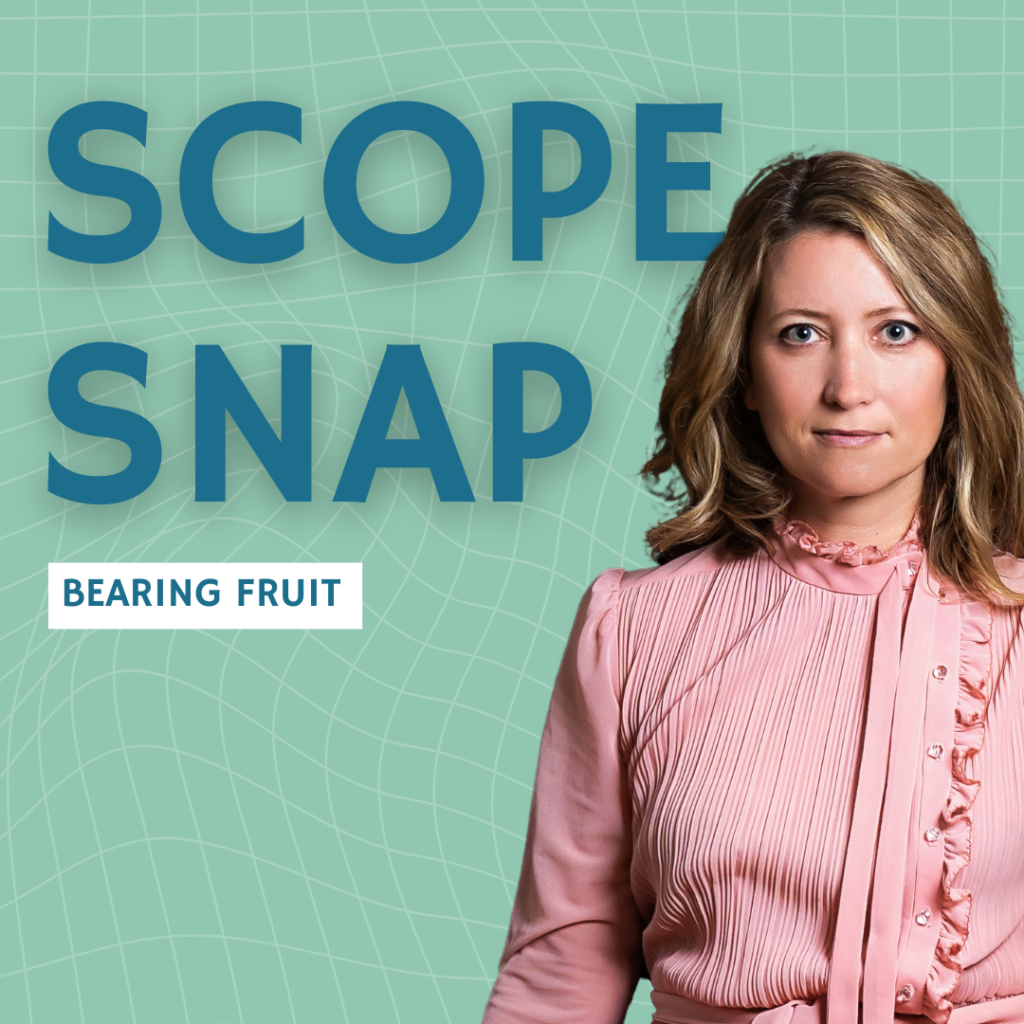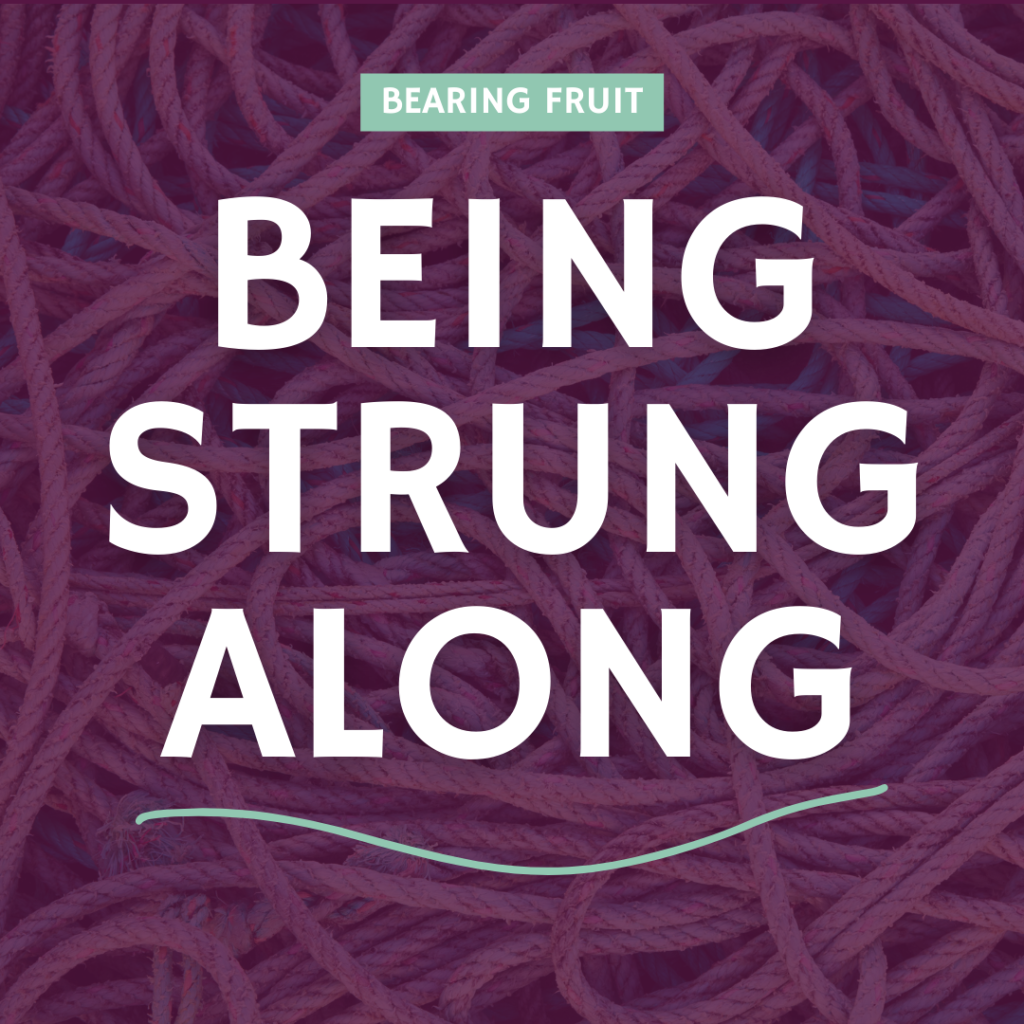Scope Snap
I know you’ve heard of scope creep – when your client asks you to do a little more here and a little more there until you’re basically running a second project for the cost of one. But let me introduce you to a new term (for maybe a familiar experience): scope snap.
This is how scope snap happens:
A well-intentioned client asks you to join onto a grant they’re writing. Your name, reputation, and skill set will add strength to their proposal.
You really like the idea of a few years of guaranteed funding and the proposed project fits your mission. So you develop a semi-detailed plan for how your part of the project would go.
In my case, it was data visualization skill-building workshops (my sweet spot) for teachers (my people) who focus on culture-based curriculum (hell yes) and want to tell the story of student progress outside of test scores (yes please) and work in a primo island vacation destination (yall I just don’t know how it gets any better for your girl Stephanie).
I had the work plan drawn up by the end of the day.
The first red flag I should have seen was when the client asked for even more: workshops on data collection (uh oh, not really my area) and identification of appropriate metrics (outside my wheelhouse). You might have “scope creep” sirens blaring in your brain. But they had dollar amounts attached to these additional asks.
Plus I said no. That’s not what I’m best at. If those are requirements, I can refer you to someone else to replace me.
(That’s one way to handle scope creep, if it comes up in the getting-to-know-you stage.)
We negotiated a bit more, finalized my part of the proposal, and then waited a bazillion years to hear back from the funding agency. And then a fazillion years to actually get the money so we could start.
And it was at that moment, a bazillion-fazillion years later, when the scope snap happened.
The amount of money my client got was not equal to the amount they’d requested. So my client had no choice but to review the proposed plans, compare it to the funds available, and start snapping scopes.
Has this ever happened to you?
Rather than capacity-building workshops teaching teachers how to be empowered with data, my client wanted me to switch lanes and design dashboards for 3 schools.
The thing is, I don’t really enjoy design work. I’m happiest when I have zero design clients. I accept just a few design projects per year and I’m extremely choosy. They don’t have the same life-changing power as my workshops do. (And design, by the by, is a fully remote activity.)
Had I known this was going to be a design project, I would have declined from the start.
This scope snap gave me whiplash.
The second big red flag danced in my face like one of those purple inflatable people outside the quickie oil change place.
So what would you do in this situation?
Options:
🧐 Be grateful for the work. Even if it’s work you don’t enjoy. Unenjoyable work is part of life. Right?
🧐 Be ungrateful for the work but stay focused on their alignment with your social justice mission and do it for the cause.
🧐 Politely decline the scope snap and refer a colleague.
🧐 Impolitely decline the scope snap and rage. Burn the bridge.
When we’re coming from a place of insecurity, when imposter syndrome is ever present, we usually only see Option 1. We don’t even know we’ve got other possibilities.
I chose Option 2. I grumbled under my breath a little but shifted my focus to my heart, which loved the overarching purpose of the project.
It worked for about a year.
The reason it fell apart was not because the mission changed or my heart turned.
The reason was actually far more obvious.
Those first two big red flags weren’t the last two big red flags. After all, that’s what reg flags are: Signs and symptoms of larger underlying dysfunction that’s gonna come bite you in the tushy at some point.
What was originally a mid-six-figure project over a few years snapped into a five-figure project that lasted one year.
Good thing I didn’t let dollar signs get stuck in my eyeballs and buy a second house in Portugal with a giant mortgage.
You’ve heard the phrase Don’t count your chickens before they’re hatched?
Yep, but in this case it’s Don’t count your checks before they’re cashed.
In hindsight, I’m sad for the year I spent trying to make it work. The hours and hours I sunk into revising and re-revising the proposed scope of work so it fit into the snapped budget. The endless Zooms.
It’s hard to learn to spot a red flag. It’s even harder to figure out whether it’s a blip or warning siren. (Everyone has blips. I blip every day. I can absolutely look past a blip.)
I’m still working on that discernment.
Here’s the lesson I’ve skimmed from this so far:
The two red flags I saw early on were both instances where the client was trying to get me to agree to work I don’t really do. A classic square-peg-round-hole situation. At this point in my life, I’ve accepted the fact I’m a square.
The next time a scope snap happens, I plan to lean toward being ok with it, as long as it still lets me be a square. When I feel like someone is trying to shave off my corners, I’m gonna say no.
I know you’ve had a scope snap, too. How did you handle it? Email me.
When to Disappoint Others
Here’s a story about first time I got a gig through LinkedIn.
Jennifer worked at a ~~ prestige beauty company ~~ and needed a consultant to revamp the 100-slide PowerPoint about the state of the prestige beauty industry for their upcoming conference.
I said yes, even though (1) the deadline was tiiiiiight, (2) I don’t really love doing this kind of design work, and (3) I don’t know jack about the prestige beauty industry.
The pay was structured as a flat dollar amount per completed slide.
Jennifer sent me the deck from last year that “just needed to be updated” (famous last words).
Each slide had at least 100 different elements on it – dozens of textboxes in 4 point font, photos arrays of expensive neck creams. I very quickly saw that the reasonable dollar amount per slide was going to equate to far under minimum wage, with all the work it would take to redesign even a single slide.
I spent a whole weekend in my office, cranking out remakes according to what I knew to be best practices for slide design.
Sent it off to Jennifer Sunday night.
She freakin hated it.
Her email was something like “this is not prestige, this is not elegant, this is not beautiful.”
That hit me like a gut punch.
I took another shot at it, still without any real idea of what prestige, elegant, and beautiful would look like to Jennifer.
I’m sure I fell short. I sent off the next draft, which, at this point, was like the day before the conference. I never heard from Jennifer again, despite my follow up emails.
I had disappointed her.
The right time to disappoint her would have been back when she slid into my LinkedIn DMs. I should have said no. The project wasn’t a good fit. The answer should have been simple.
Or, I could have asked for a sample slide so I could get a sense of the scope of the work. I woulda opened the sample slide, laughed out loud in my office, then politely declined the job – disappointing her.
What do those two opportunities have in common?
They come before the contract is signed.
The best time to disappoint someone is before you sign official paperwork.
We risk damaging our reputation and wasting everyone’s time and energy when we don’t engage in a thorough discovery phase before we ink signatures.
In order to honestly engage in a discovery phase, you’ve gotta know what work you will and won’t do. What lights you up and what’ll be a slog. Who you love to work for and who you don’t need to support.
Those distinctions are blurry at best when we’re desperate for work or flattered by the ask.
You need clarity about your focus and purpose to enter into a discovery phase. (You also need a list of client red flags to look for.)
Most of us skirt this. Because we want to “remain open to new opportunities.”
But clarity about your focus and purpose brings you strength and confidence.
You might think, what’s the harm? You only lost one weekend of your life saying yes to Jennifer.
Not so, my friend. I lost my time, my energy, and I risked my reputation. And as an entrepreneur, time, energy, and reputation are all you’ve got.
So now I know better. I asked for a sample to get a sense of the scope. It’s part of my discovery process.
Let’s trade stories. How did you disappoint a client, after the contract was signed? And what changes have you made to your discovery phase as a result? Shoot me an email.
Being Strung Along
The thing about being strung along by a “potential client” is that you often don’t know it til it’s too late. Let’s look at what happened to a couple of my students and let their hindsight become your foresight.
No work without a contract.
Sometimes we make it easy to string us along. Like when we agree to work we wouldn’t normally do, for the promise of a future contract.
One of my previous mentees (let’s call her Trudy) accidentally set herself up for being strung along. She realllllllllly wanted to partner with this organization. It woulda been a big fish to add to her portfolio.
In her early conversations with her point of contact at this org, they seemed super eager to work together. So much so, that the client asked Trudy if she’d be willing to jump in on some small tasks (warning sign #1) at a low (warning sign #2) hourly rate (warning sign #3).
Trudy didn’t know me then, so she said yes. The client said it would just be temporary while they write up the bigger contract and get it in place.
Did Trudy ever advance beyond low wage task labor?
No my friend she did not.
And she was too embarrassed about the scope of her work there to ever include this client in her portfolio.
The client doesn’t know what they want.
Another student of mine (code name: Blanche) got stuck in a months-long string-along with a potential client because of “decision by committee.”
Similar to having too many cooks in the kitchen, decision by committee is an excellent way of slowing progress to a casual stroll through I Don’t Know What Do You Think Land. Have you and your partner ever entered into starvation because neither of you could decide what you wanted to eat for dinner? Like that. But with ten partners.
Blanche had a typical initial meeting with this client to lay out the possible solutions she could offer to the problems they were experiencing. They seemed to have come to agreement about the way forward. Blanche went home and waited for a contract.
And waited.
Blanche checked in but by this point, the finer details of the conversation had been lost, so the potential client asked Blanche to write up the plan in a proposal (note to Future Blanche: Write and send the proposal immediately after the initial meeting.)
Blanche sent the proposal and waited.
And waited.
When she checked in again, the potential client said the team needed to really think about whether the proposed solution would solve the right problem. Could Blanche meet with the whole team and help them talk through their problems?
I’m gonna skip to the end of Blanche’s tale: Blanche dealt with so much waffling you’d think she could open an IHOP franchise. This client liked the idea of working with Blanche (or, at least, of having a consultant) but couldn’t ever make a decision about where to start.
I actually suspect they didn’t have the funds to invest in the right solutions but didn’t want to say that to Blanche’s face, so they just let it playyyyyyy out.
Look, some clients really do take months of nurture before the project comes to fruition and you get that sweet contract in your hands. You’ve gotta relationship build. They’ve gotta convince some team members to swipe right on you. Procurement processes and vendor onboarding – the creepy evil twins staring at you blankly at the end of the hallway of consulting life – can take a long, long time.
You’ve gotta learn how to tell the difference between when they really do need time and when they’re stringing you along. Here’s how I tell:
Check-ins should advance the plot.
If you’re not hearing a reply after you send a check-in email, wait a week and send another. We all have those weeks from hell where we can barely breathe. But if you don’t hear anything after the second check-in, move on with your life.
When you do get a reply, it should include some decision or action or next step with a date attached to it.
Like “My team and I have a meeting to discuss this project next Tuesday and I’ll get back to you then.”
or “I have a few more questions. Can we schedule a Zoom to discuss?”
These are check-ins that advance the plot.
If your check-in gets a reply like “Thank you for checking in!” or “We’re still thinking about it.” you’re being strung along and it’s time to walk on by.



